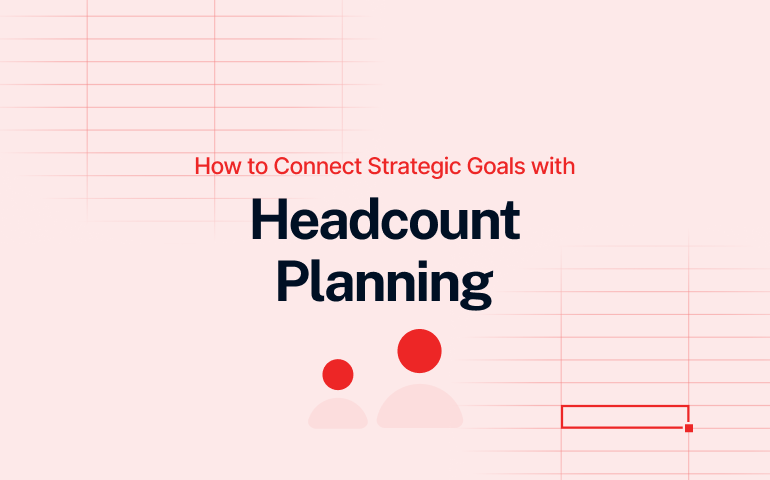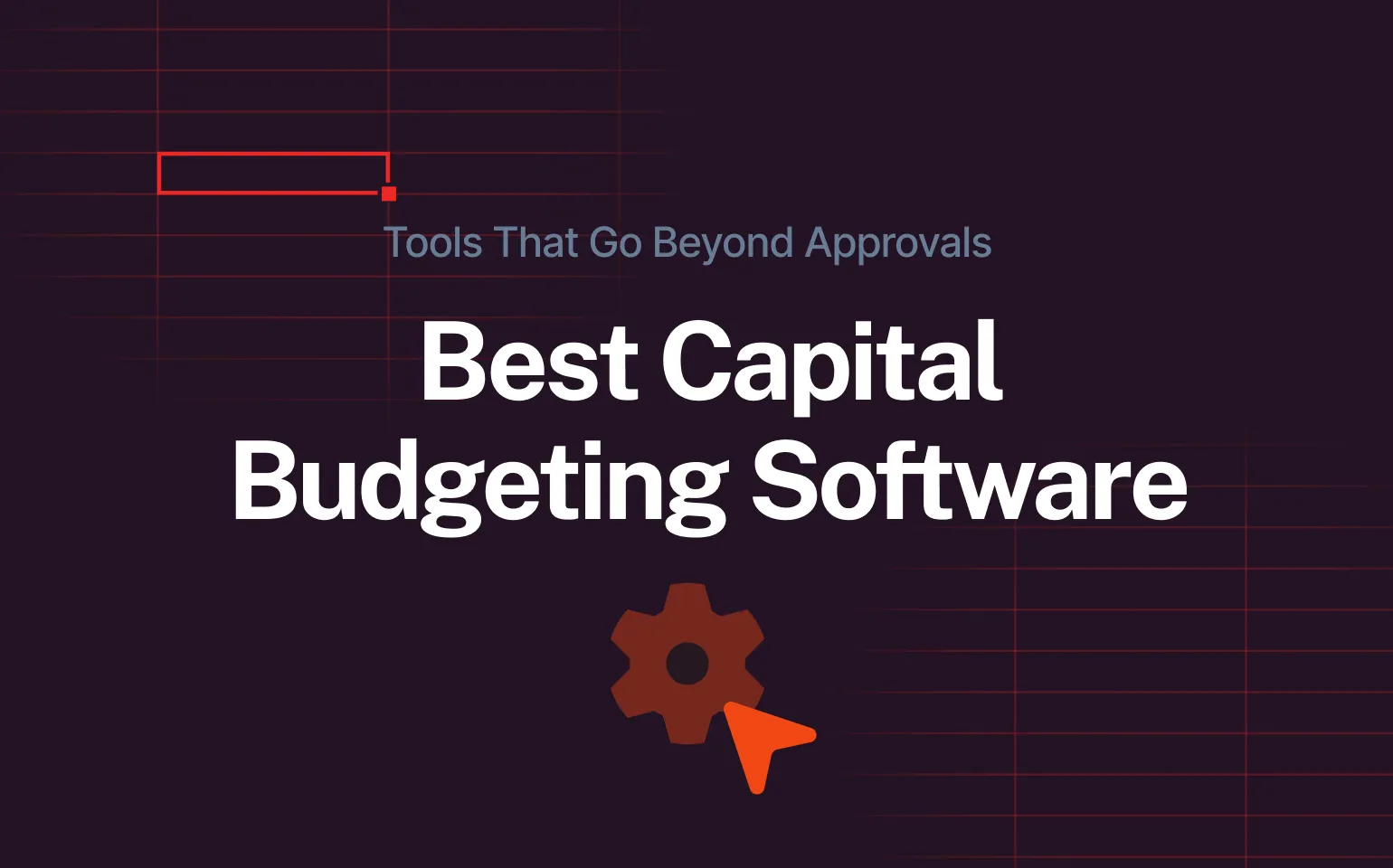We all know that headcount planning is rarely just about tracking people and payroll. For companies of all sizes it’s one of the most important levers for executing strategy, especially when labor is a major cost and capacity driver. Yet, like any other legacy planning, it’s often handled in silos, buried in spreadsheets, or delayed until after key financial decisions are made.
Read Strategic Financial Planning: How to Plan for Success
In many companies, headcount planning follows a separate path from financial planning. HR tracks roles and hiring timelines. Finance models salary costs and headcount caps. Department leads push for resources based on shifting needs. Everyone is planning, but not necessarily together. That disconnect slows execution and introduces risk, often just when precision matters most.
Let’s get into how headcount planning can drive your strategy forward instead of quietly wrecking it from the inside.
Why Headcount Planning Often Undermines Strategic Execution
On paper, headcount planning sounds straightforward. You just track who is on the team and what they cost. In reality, HR is tracking people, Finance is tracking costs, and Operations is tracking capacity in separate files. When those worlds do not meet, plans go out of sync fast and decisions get made on numbers that are already old.
- In many companies, headcount planning is managed separately from strategic planning
- Data is scattered across Excel files, ERP systems, and HR tools, making it slow and messy to piece together
- HR is focused on positions and FTE counts, while Finance is looking at cost centers, and alignment is rarely structured
The result: Hiring plans end up clashing with cost targets, and operational bottlenecks only show up when it’s too late to fix them.
Read 5 Strategies for Smarter Corporate Financial Planning

What’s at Stake When Planning Lags Behind Strategy
When headcount planning lags behind strategy, it is not just an admin delay. It directly impacts how fast and how well the business can move. The costs show up in both the numbers and the execution.
- Over- or under-hiring hits both EBITDA margins and OPEX plans
- Inflexible plans slow down execution of growth initiatives like CAPEX or new product launches
- CFOs and Controllers lose time reconciling data instead of steering the business
- In fast-moving industries like manufacturing or pharma, slow workforce decisions can mean missed opportunities or expensive, last-minute fixes
Here’s how to make this better.
Three Ways to Align Headcount Planning with Strategic Priorities
Getting headcount planning in sync with your broader strategy does not have to be complicated. These three changes can make an immediate difference.
1. Build a shared model
We have already mentioned siloses. Too often it happens that HR, Finance, and Operations work on different versions of the same plan. HR tracks open roles, Finance models the salary costs, and Ops tries to figure out if there’s enough capacity to hit production targets. The problem? None of these files actually talk to each other.
Bringing HR, Finance, and Operations into the same planning process, working from one model with the same assumptions can cut out weeks of back-and-forth and make sure hiring plans, budgets, and capacity targets match from day one.
The payoff is clear: faster planning cycles, fewer mismatches, and a lot less time wasted chasing data that should have been aligned from the start.
2. Connect financial and workforce data
Give teams real-time visibility into how hiring decisions affect costs. If Operations wants to add ten technicians in Q3, Finance should see the budget impact instantly, without waiting for the next reporting cycle. When workforce and financial data are connected in real time, that gap disappears.
This is a simple shift, but it means no more unwanted surprises. Budget overruns are caught before they happen, and hiring plans can be adjusted without derailing the numbers. Everyone sees the same impact, right when decisions are made.

3. Enable scenario planning
Plans rarely go exactly as expected. Wages rise mid-year, hiring freezes get announced, or reorgs change reporting lines. If your workforce plan is locked in spreadsheets, adjusting for these changes takes weeks — and by the time you’re done, the decision window has already passed.
Test what happens if wages rise mid-year, if a reorganization changes reporting lines, or if a hiring freeze hits in Q4. Being able to model these changes in minutes, not weeks, helps you respond quickly without losing sight of cash flow or strategic goals.
Read Scenario Planning: How to Prepare Your Business for Uncertainty
Strategic Workforce Planning in Real Life
Let’s say you run a fast-moving consumer goods distributor with 850 employees spread across several warehouses. Every summer holiday season, the rush turns into a guessing game. HR is trying to figure out how many extra warehouse staff to bring in based on last year’s numbers, while Finance is in a different spreadsheet working out what those hires will cost. By the time the numbers finally match, the busy season has already started. If you are understaffed, deliveries are delayed, customer complaints spike, and competitors pick up the slack. If you are overstaffed, labor costs eat into your margins and temporary staff spend half their shift standing around.
This is exactly where headcount planning makes the difference. Once you switch to a centralized workforce planning process with a platform like Farseer’s Workforce Planning solution, you’ll get the feeling like everyone is finally working off the same page. With this you’ll easily be able to eliminate outdated Excel files, centrally manage hiring plans, salaries, benefits, and workforce costs, and all in real time.
So, if Operations wants fifty extra pickers for July and August, Finance can see the cost impact right away and adjust budgets without the back-and-forth. The summer rush stops feeling like a gamble and starts feeling like a plan, fully staffed, on time, and without blowing the margins.
Headcount Planning as a Strategic Lever
Headcount is not just another line in the budget. It is one of the biggest levers you have to hit your targets and grow the business. Every hire, delay, or mismatch affects your margins, your timelines, and your ability to deliver. When headcount plans live in Excel or sit disconnected from your financial plan, you are making decisions with one eye closed.
The companies that get this right treat headcount planning as a core part of their strategy. Hiring is linked to capacity, cost is tied directly to impact, and decisions are made on live, accurate data, not on instinct or last month’s spreadsheet.
When you fix this, you do more than save time. You put yourself in the room where strategy is decided, not just the room where it is reported.
So the real question is this: is your headcount plan helping your business move faster, or is it quietly holding it back?
Đurđica Polimac is a former marketer turned product manager, passionate about building impactful SaaS products and fostering connections through compelling content.




